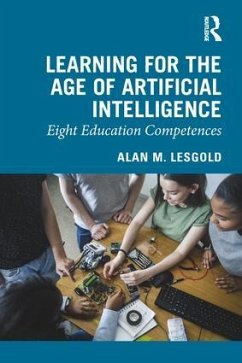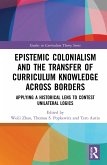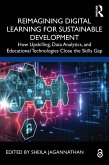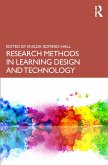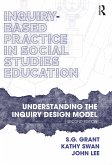Learning for the Age of Artificial Intelligence is a richly informed argument for curricular change to educate people towards achievement and success as intelligent machine systems proliferate. Describing eight key competences, this comprehensive volume prepares educational leaders, designers, researchers, and policymakers to effectively rethink the knowledge, skills, and environments that students need to thrive and avoid displacement in today's technology-enhanced culture and workforce. Essential insights into school operations, machine learning, complex training and assessment, and economic challenges round out this cogent, relatable discussion about the imminent evolution of the education sector.
"If you care about more deeply understanding what it will take to design educational systems that prepare the next generations for a rapidly changing world-especially the ways in which smart machines will influence our careers, work, and life-this book is a must-read." - Rich Milner, Cornelius Vanderbilt Endowed Chair of Education, Professor of Education, Vanderbilt University, USA
"This is an essential book for those who are exploring the impact of artificial intelligence and other disruptive technologies on education, the workforce, and life. Alan Lesgold recommends the development of eight competencies in school, home, and 'third places' to help us adapt to our rapidly changing world. As a leader in the evolution of cognitive science and intelligent tutoring systems, he is the ideal person to write this book." - Art Graesser, Professor in the Department of Psychology and the Institute of Intelligent Systems, University of Memphis, USA
"Alan Lesgold's 'voice' is a pleasure to read, as he makes complex ideas eminently readable. After having spent his whole career in the world of educational research and application, his observations and use of research are interesting and informative." - Roberta Michnick Golinkoff, School of Education and Departments of Psychology and Linguistics and Cognitive Science, University of Delaware, USA
"This is an essential book for those who are exploring the impact of artificial intelligence and other disruptive technologies on education, the workforce, and life. Alan Lesgold recommends the development of eight competencies in school, home, and 'third places' to help us adapt to our rapidly changing world. As a leader in the evolution of cognitive science and intelligent tutoring systems, he is the ideal person to write this book." - Art Graesser, Professor in the Department of Psychology and the Institute of Intelligent Systems, University of Memphis, USA
"Alan Lesgold's 'voice' is a pleasure to read, as he makes complex ideas eminently readable. After having spent his whole career in the world of educational research and application, his observations and use of research are interesting and informative." - Roberta Michnick Golinkoff, School of Education and Departments of Psychology and Linguistics and Cognitive Science, University of Delaware, USA

